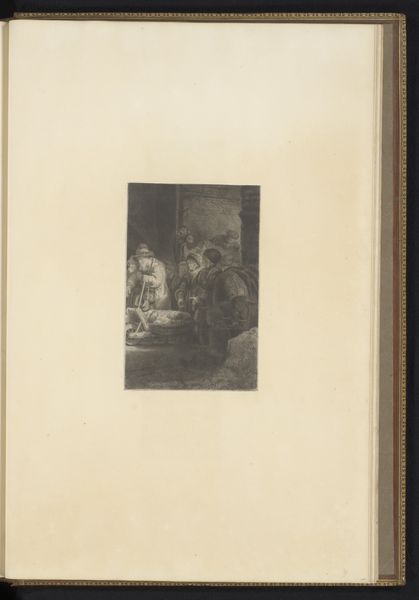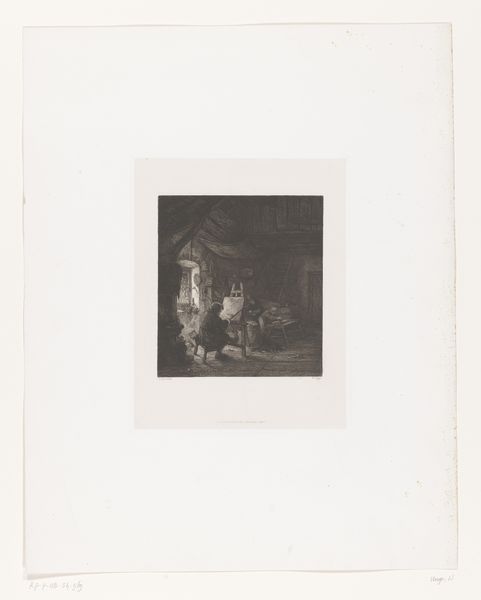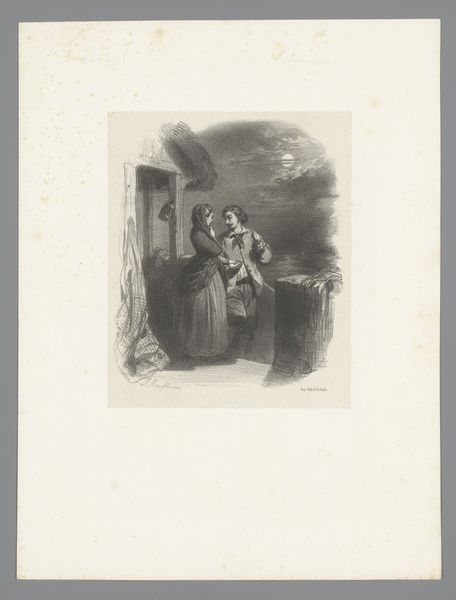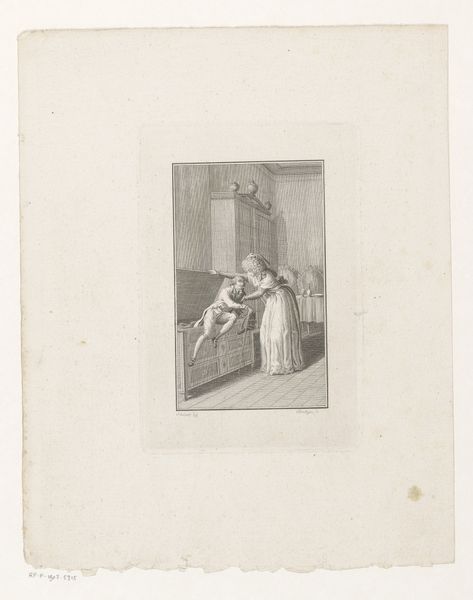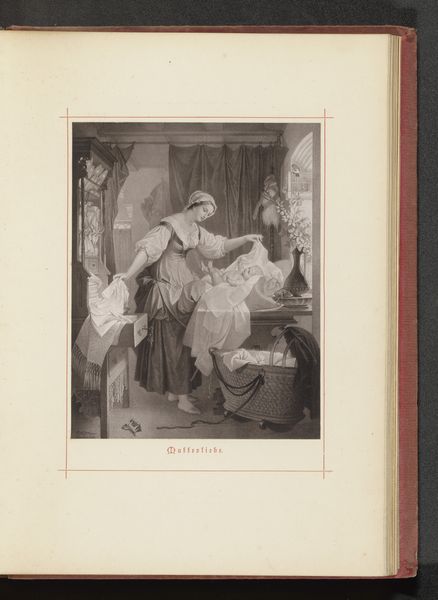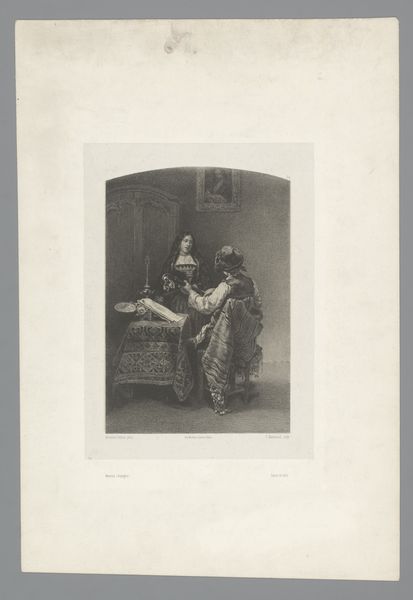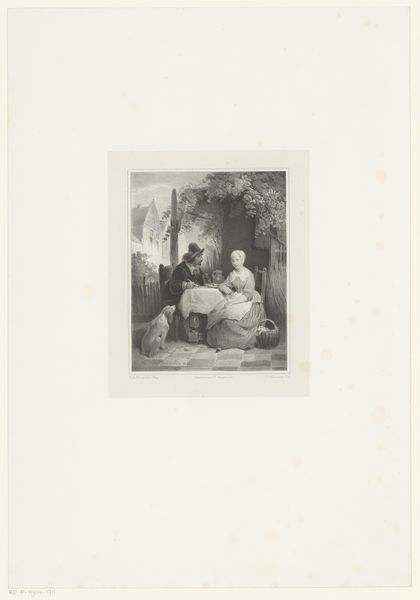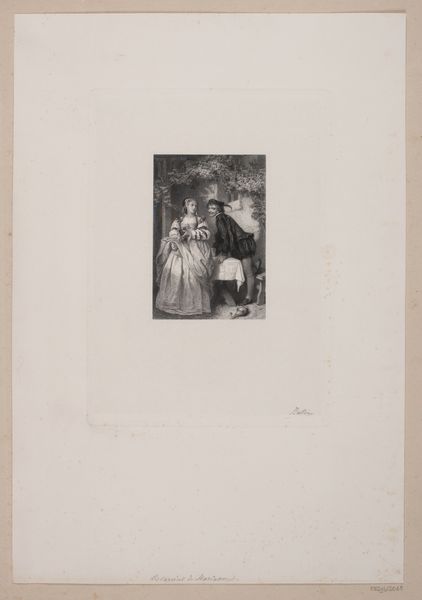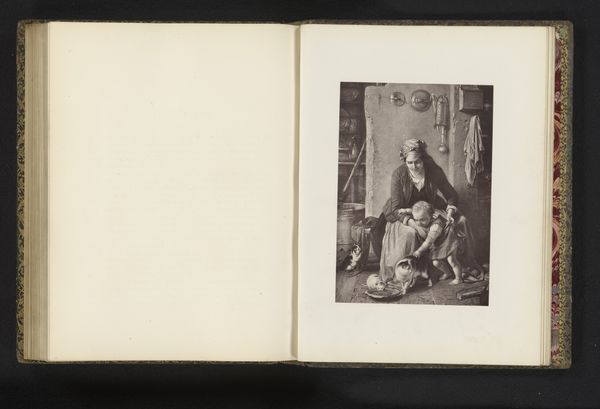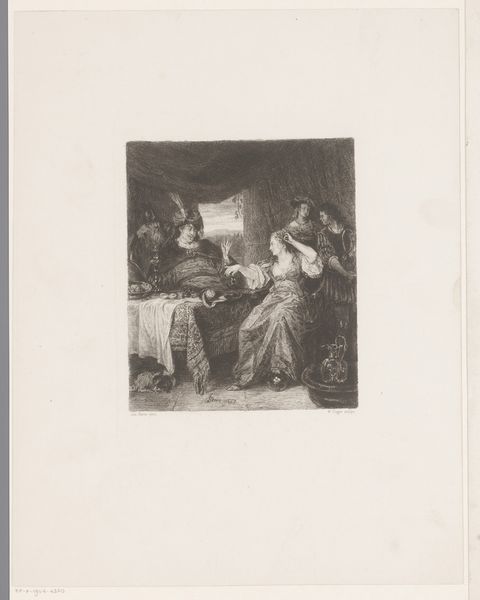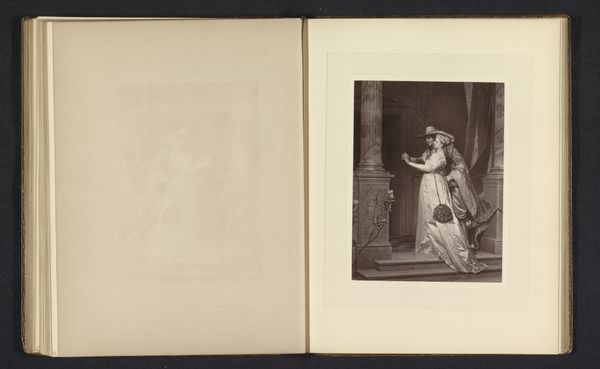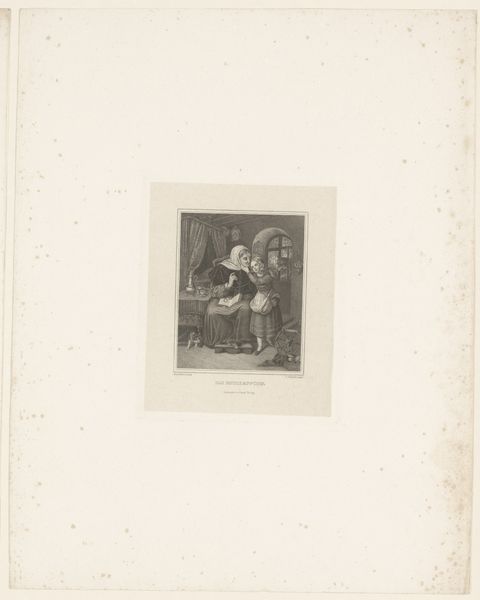
Fotoreproductie van het schilderij Het gebed van de heilige Bonaventura door Zurbarán before 1875
0:00
0:00
Dimensions: height 198 mm, width 185 mm
Copyright: Rijks Museum: Open Domain
Editor: Here we have a photographic reproduction, made before 1875, of Zurbarán’s painting, "The Prayer of Saint Bonaventure." It’s rendered in shades of gray on paper, and there’s something solemn and austere about it. What can you tell me about it? Curator: Let's think about the context. This is a photograph *of* a painting. Consider the labour involved at each step: Zurbarán’s physical application of pigment to canvas in the 17th century, crafting an image aligned with the social and religious structures of the time. Then fast forward to the 19th century: photographic reproduction made images like this more accessible for consumption by a wider audience. How does that shift change the object's meaning? Editor: That’s a really interesting point! So, the act of reproducing the painting shifts the focus, away from, say, pure religious devotion towards a wider distribution. Curator: Precisely. How does the shift from oil paint to photographic chemicals change the message? Is the aura diminished or amplified through the mechanical reproduction? Think of the materiality of the paper, the inks, the photographic process - all contribute to the artwork's cultural value as something that's reproducible, that democratizes art beyond the elite. Editor: So it is not simply the religious image depicted. It is the conscious manipulation of various media throughout the centuries which builds meaning. I never really thought about it that way before. Curator: Indeed! This reproduction speaks volumes about access, consumption and shifts in artistic production. Editor: I see it now! Thanks so much for sharing your expertise. Curator: My pleasure. It's crucial to keep digging to expose the social processes within an artwork, layer by layer!
Comments
No comments
Be the first to comment and join the conversation on the ultimate creative platform.
